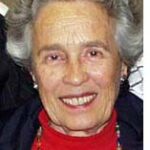By Eileen Wingard

SAN DIEGO — The San Diego Symphony’s opening concert of its subscription series featured Mahler’s Symphony #2, “Resurrection,” an appropriate choice as the orchestra resumes residency in its beautifully refurbished hall, now renamed, the Jacobs Music Center.
The concert opened with Time: Three Movements for Orchestra by Thomas Larcher, a contemporary Austrian composer. It was co-commissioned by the SDSO, the Montreal Symphony (the other orchestra for which Raphael Payare is music director), two German orchestras and the Netherlands Philharmonic.
It opened with a flurry of sound and throughout, there was a clock-like ticking. Various timbres were achieved by the use of a large array of unusual percussion instruments: waterphone, sandblocks, thundersheet, cowbell, Chinese gong, drums and woodblocks. There were also excerpted passages from other composers including from the Mahler symphony heard after intermission. It served to herald in music of the future.
Following intermission, the Mahler symphony, a massive eighty-minute, five movement work, received a glorious performance under the direction of the SDSO’s music director, Raphael Payare. He communicated his musical concepts with every fiber of his body, moving with intensity and grace. He obviously has a great affinity for Mahler’s music.
The cellos opened the first movement with dramatic incisiveness before the theme was taken up by other sections, climaxing with the full orchestra before the tranquil second theme emerged, introduced by the violins, accompanied by the harps. Mahler’s ability to create excitement was evident as the movement forged ahead, finally returning to the opening themes, the harps introducing the coda and ending with two pizzicatos.
The second movement was a Landler, whose triple metered flow was infused with Viennese charm. Following a raucous middle section, it returned to the lilting Landler theme.
The third movement, had a perpetual motion quality, and klezmer-like inflections. It seemed to gravitate between cries of anguish and joyous dancing.
The final two movements included vocal soloists, soprano Angela Meade and mezzo-soprano, Anna Larsson, a full chorus and offstage instruments. Larsson sang in the fourth movement. Her regal voice mirrored her queen-like presence as she intoned the words of the song, Urlicht (Primal Light), which the composer had written earlier and incorporated into the symphony.
The final movement had march-like passages based on the Dies Irae, off-stage brass calls, soprano and mezzo passages and the chorus entrance near the end. Mahler, himself, described what he was trying to depict, “the earth quakes, the graves burst open.” His rendition of judgement day was with orchestral fury. Finally, the sound of a nightingale was heard and the chorus sang of rebirth and eternal life. It concluded with ringing brass and peeling bells.
The SDSO brass section was particularly spectacular throughout the performance, with memorable solos from the horn, trombone, trumpet and tuba as well as excellent ensemble work. The woodwinds were outstanding, and the strings were warm and precise. Concertmaster, Jeff Thayer and other principal strings executed their solo passages with great beauty. The percussion section was also kept busy throughout with some notable solos.
How fortunate we are in San Diego to have a symphony orchestra of this caliber performing a work of such magnitude with such outstanding artistry.
This performance brought back sad memories of another fine SDSO performance of the Resurrection Symphony, the last concert with conductor Yoav Talmi before the orchestra plunged into over two years of bankruptcy. That, too, was a marvelous performance, with the musicians hoping the orchestra could remain afloat. We had a fine group of musicians then, also, as indicated by the fact that many of our players went on to find lucrative positions in orchestras such as the New York Philharmonic, the Chicago Symphony, the Pittsburgh Symphony, the Seattle Symphony, the San Francisco Symphony and the Oregon Symphony. Our concertmaster even became concertmaster of one of Holland’s great orchestras. But our San Diego community did not seem ready to support the orchestra to keep it alive.
Now, with a capable president and CEO, Martha Gilmer, a world class conductor, Raphael Payare, excellent musicians, generous philanthropists in our community, especially Joan, of blessed memory, and Irwin Jacobs, and a hall with outstanding acoustics, the orchestra can surely thrive.
Most of all, there was a full house at the October 6 concert. Hopefully, that is an indication of strong community support.
*
Eileen Wingard, a retired symphony violinist, is a freelance writer specializing in coverage of the arts.
what beautiful writing, dearest Eileen!
Such clear descriptions! As if each of us reading your words could
feel a truly personal presence in the new Jacobs Music Center!
Your memories of Yoav Talmi, your so knowledgeable writings
about details in an orchestra, of an excellent conductor and also
the acoustics, the renewed and much improved complete new
hall are a joy to read & share with you! Thank you!